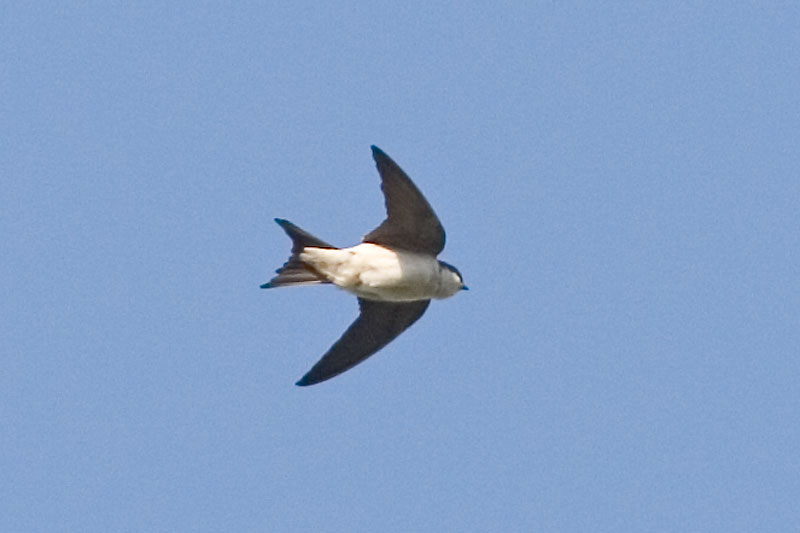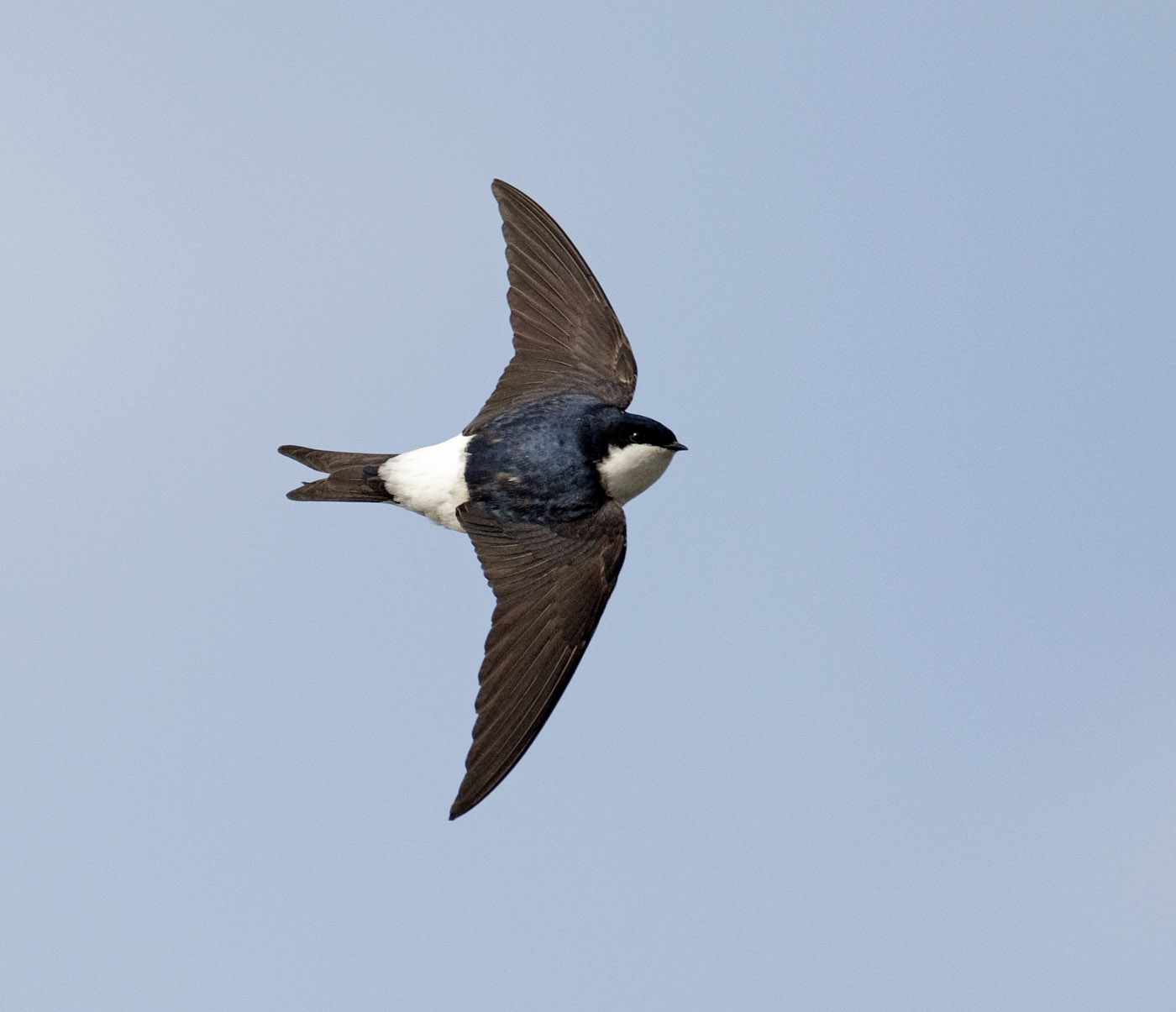
Delichon urbica
SUBFAMILY
Hirundinae
TAXONOMY
Hirundo urbica Linnaeus, 1758. Six geographic subspecies are
recognized.
OTHER COMMON NAMES
English: Common house-martin, northern house-martin;
French: Hirondelle de fenкtre; German: Mehlschwalbe; Spanish:
Aviуn Comъn.
PHYSICAL CHARACTERISTICS
5.5 in (14 cm). It is colored glossy purple-brownish on the
back and white below, with a white rump and a forked tail.
DISTRIBUTION
Breeds widely in Eurasia, from Britain through to Japan and
the Koreas, and including part of northern North Africa. It
migrates to spend the non-breeding season in central and
southern Africa, South Asia, and southeastern China.
HABITAT
Occurs in open areas, usually close to water, and also in towns
and residential areas.
BEHAVIOR
It migrates to spend the non-breeding season in southern parts
of its range. Attracts a mate and defends a nest site by song
and aerial displays.
FEEDING ECOLOGY AND DIET
Feeds on flying insects, which are caught on the wing.
REPRODUCTIVE BIOLOGY
Monogamous. The nest is a half-cup of mud with an oval entrance
at the top and is built against a vertical wall under an
overhanging roof. It is usually placed on a building in an open
area, but the species also breeds on natural cliff faces. Both
sexes incubate the four to five eggs and there are often two
broods per season.
CONSERVATION STATUS
Not threatened. A widespread and abundant species.
SIGNIFICANCE TO HUMANS
The house martin is a popular bird for many people. It lives in
close association with humans and has likely benefited from this
relationship and become more abundant than in former times.
Other popular Animals
Photo Gallery of - House martin




 Animalia Life
Animalia Life